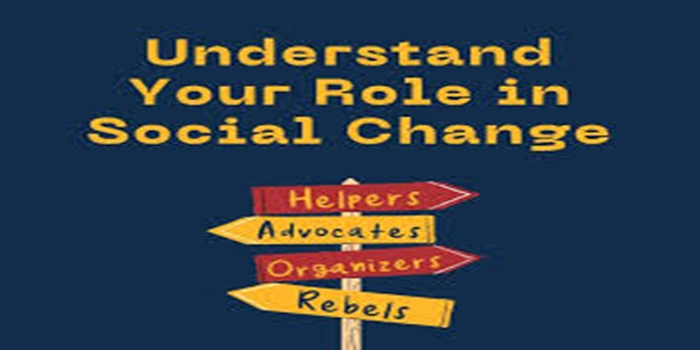Introduction
That social roles are a key part of how societies are structured and that they involve the expectations, responsibilities, and behaviors associated with a person’s part in a social group. The provided text emphasizes that understanding social roles is essential for comprehending social functions, individual interactions, and the shaping of identity and behavior. This article, explores social roles, the types, social role expectations and norms, the impacts, and the application.
Definition
A social role is a set of expected behaviors, attitudes, and functions associated with a particular social status or position within a society. Individuals learn and perform these roles, which can include identities like parent, teacher,” or “employee,” and serve as a bridge between personal identity and societal norms.
social role refers to a pattern of behavior that is expected of an individual in a given social position or status. These roles are socially defined and understood within a group or society and are essential for social organization and cooperation.
Characteristics of Social Roles
Expectations:
Each role comes with a shared understanding of how a person in that position should act, what they should think, and what functions they should perform.
Status:
A social role is tied to a social status; you occupy a status and play a role. For example, being a parent is a status, and caring for a child is the role associated with that status.
Function:
Roles have a socially agreed-upon purpose, helping to organize society and provide structure.
Learned Behavior:
Individuals learn social roles through observation, instruction, and interaction with others who fulfill complementary roles.
Cultural Influence:
The specific expectations and behaviors of a social role can vary significantly across different cultures and evolve over time.
Role Set:
A person often holds multiple social roles simultaneously, such as being a parent, a sibling, and an employee.
Types of Social Roles:
Social roles vary depending on the context and the relationships involved. Here are several key types:
- Ascribed Roles
These are roles assigned at birth or involuntarily acquired. Examples:
Gender
Ethnic background
Social class at birth
- Achieved Roles
These are roles acquired through personal effort or choice. Examples:
Student
Employee
Athlete
- Informal vs. Formal Roles
Formal roles are defined by official structures, such as workplace roles or political positions.
Informal roles arise naturally in social settings, such as being the “peacemaker” in a friend group or the “jokester” in a family.
- Complementary Roles
Roles that exist in pairs and rely on each other. Examples:
Doctor and patient
Parent and child
Employer and employee
Social Role Expectations and Norms:
Social Role Expectations
Social role expectations are the specific behaviors, duties, and responsibilities that are associated with a particular position or status within a group or society. Think of them as the “job description” for a given role. These expectations are tied directly to the part an individual is playing, such as a teacher, a student, a parent, or a doctor.
For example, the expectations for a teacher include:
Being knowledgeable in their subject.
Educating students.
Maintaining order in the classroom.
Evaluating student performance.
Attend classes.
Complete assignments.
Respect their teachers.
Study for exams.
Social Norms
Social norms are the broader, unwritten rules of behavior that are considered acceptable and appropriate within a community or social group. They are not tied to a specific role but apply more generally to all members of a group or society. Norms dictate how people should act, think, and feel in different situations, providing a framework for social order and predictability.
Examples of social norms include:
Waiting in line for your turn (queueing).
Maintaining a certain personal distance when speaking to someone.
Covering your mouth when you sneeze or cough.
Norms can vary significantly between cultures and even between different subcultures within a society. For instance, the appropriate way to greet someone (e.g., a handshake, a bow, a kiss on the cheek) is a social norm that changes depending on the cultural context.
The Impact of Social Change on Roles:
Alters Social Structures and Norms:
Social change can shift an entire society’s structure, from economic systems to cultural patterns, which in turn changes the roles people play within those structures.
Modifies Expectations and Behaviors:
As societal goals and values change, the acceptable and expected behaviors for individuals in certain roles also change, creating new norms and disrupting old ones.
Creates New Roles and Eliminates Others:
For example, rapid technological innovation can create new jobs and responsibilities, while the decline of traditional industries might diminish others.
Impacts Key Social Institutions:
Institutions like education and family are deeply affected, leading to altered roles for teachers, parents, and children.
Examples of Impact
The Teacher’s Role:
Rapid technological and societal changes have burdened teachers with new responsibilities, including dealing with increased violence and the expectation to provide moral and civic education that was once the parents’ duty, according to ResearchGate.
Gender Roles:
Societal changes can lead to redefined gender roles, altering responsibilities and expectations within families and the workplace, notes Study.com.
Demographic Shifts:
Increasing population density, for instance, can stimulate new technological innovations and a greater division of labor, thereby changing the roles people play in their communities.
Potential Consequences
Stress and Frustration:
Teachers, for example, may experience frustration and stress due to increased responsibilities and the perceived lower status of their profession in modern times, according to a ResearchGate study.
Social Rifts:
Controversy surrounding social changes can lead to rifts within society, potentially causing economic or environmental problems.
Positive Outcomes:
Conversely, social change can foster positive developments, such as greater access to education, acculturation, and technological advancement.
Conclusion
social roles are fundamental to society, organizing behavior, facilitating interaction, and shaping identity. It also notes that while they provide stability and predictability, they can also cause tension and limitations. The text concludes that understanding social roles is crucial for individuals to navigate social life, resolve conflicts, and advocate for more equitable and flexible social structures.


